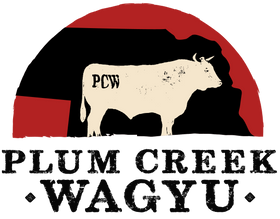Wagyu beef is now synonymous with luxury, renowned for its exquisite marbling, tenderness, and deep flavor. However, the journey of Wagyu cattle from their origins in Japan to becoming a global symbol of fine dining is a rich and fascinating story that spans centuries. From ancient farming practices in Japan to today's worldwide appeal, Wagyu beef has captured the hearts (and taste buds) of food lovers everywhere.
Ancient Beginnings: The Roots of Wagyu in Japan
Wagyu cattle have a long history in Japan, dating back over 2,000 years. Originally used as draft animals in agriculture, these cattle were prized for their strength and endurance. However, their significance shifted in the early 1800s when Japan began selective breeding practices to improve meat quality. The name "Wagyu" itself translates to "Japanese cow" ("wa" means Japan and "gyu" means cow), and over time, farmers perfected methods to create the distinctive marbling and tenderness for which Wagyu is known today.
Isolation and Preservation of Wagyu Breeds
Japan's strict isolationist policies during the Edo period (1603–1868) kept the country's cattle breeds pure. This period of isolation helped preserve the genetic integrity of Wagyu cattle, laying the foundation for the highly prized beef we know today. Four main Wagyu breeds emerged: Japanese Black, Japanese Brown, Japanese Shorthorn, and Japanese Polled. Among these, Japanese Black is the most common and produces the famous beef that is now exported globally.
The Opening of Japan: Wagyu Goes Global
In 1868, with the end of Japan's isolation during the Meiji Restoration, foreign cattle breeds were introduced to Japan, and crossbreeding became common. However, in the 20th century, Japan recognized the superior qualities of their native breeds and imposed regulations to maintain pure Wagyu bloodlines. By the mid-20th century, Wagyu cattle had become a prized delicacy in Japan, but it wasn't until the 1970s that the first Wagyu cattle were exported to other countries.
Wagyu’s Arrival in the United States
The first Wagyu cattle arrived in the United States in the late 1970s, sparking interest among American ranchers and chefs alike. While the initial exports were limited, the demand for this unique beef steadily grew. American breeders soon began to cultivate their own herds, using a combination of Japanese breeding techniques and local agricultural practices. This led to the creation of "American Wagyu," a hybrid breed known for its tenderness and marbling, though with slightly different characteristics than pure Japanese Wagyu.
A Global Icon of Luxury Beef
Today, Wagyu beef is enjoyed in fine dining establishments around the world, from New York to Tokyo to Paris. It has become the gold standard for premium beef, celebrated for its delicate flavor, buttery texture, and melt-in-your-mouth tenderness. Wagyu beef's global appeal is fueled by its unique production methods, with cattle often raised with the utmost care—receiving specialized diets and stress-free environments to ensure top-quality meat.
Whether you’re enjoying A5-grade Japanese Wagyu or a premium cut of American Wagyu, each bite is the culmination of centuries of breeding, farming, and culinary expertise. What began as a prized asset in Japanese agriculture has now become a worldwide phenomenon, representing the pinnacle of beef production and gourmet dining.
The Future of Wagyu Beef
As demand for Wagyu beef continues to grow, ranchers across the globe are working to maintain the high standards that have made Wagyu so desirable. New markets are emerging, and the global fascination with Wagyu shows no signs of slowing down. The meticulous care taken in raising these cattle, combined with their rich genetic heritage, ensures that Wagyu beef will remain a symbol of luxury and refinement for years to come.
The journey of Wagyu cattle from Japan to the world is a testament to the dedication of farmers, breeders, and chefs who have kept the tradition alive. Today, as you savor a tender cut of Wagyu, you’re experiencing a product that has crossed continents and cultures, bringing the taste of Japan’s finest to tables around the globe.
Related Posts
Beyond the Steak: Creative Wagyu Recipes for Every Occasion
Take your Wagyu beyond the steak! From juicy burgers to slow-cooked short ribs and mouthwatering tacos, explore creative Wagyu recipes perfect for any occasion.
Mastering the Perfect Wagyu Steak: Cooking Techniques for Every Cut
Master the art of cooking Wagyu steak with expert techniques for grilling, pan-searing, and sous vide. Discover the best methods to bring out the rich marbling and unmatched flavor of every cut.
Pairing Wagyu with Whiskey, Wine, and Cocktails: The Best Drinks to Complement Wagyu Beef
Discover the best drink pairings for Wagyu beef! From rich whiskeys and bold wines to complex cocktails, find out how to complement the rich flavors of Wagyu with the perfect beverage!
Wagyu Myths Debunked: Separating Fact from Fiction
Wagyu beef is often surrounded by myths, from misconceptions about its price to confusion about its fat content. In this post, we debunk the most common myths about Wagyu beef, providing the facts that every meat lover should know.
Wagyu and the Farm-to-Table Movement: How Local Sourcing and Sustainable Ranching Impact Wagyu Quality
Explore how the farm-to-table movement is enhancing the quality of Wagyu beef through local sourcing and sustainable ranching practices. Learn how these practices contribute to better flavor, ethical production, and a positive environmental impact.








